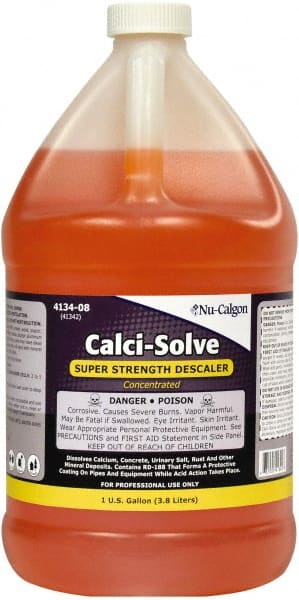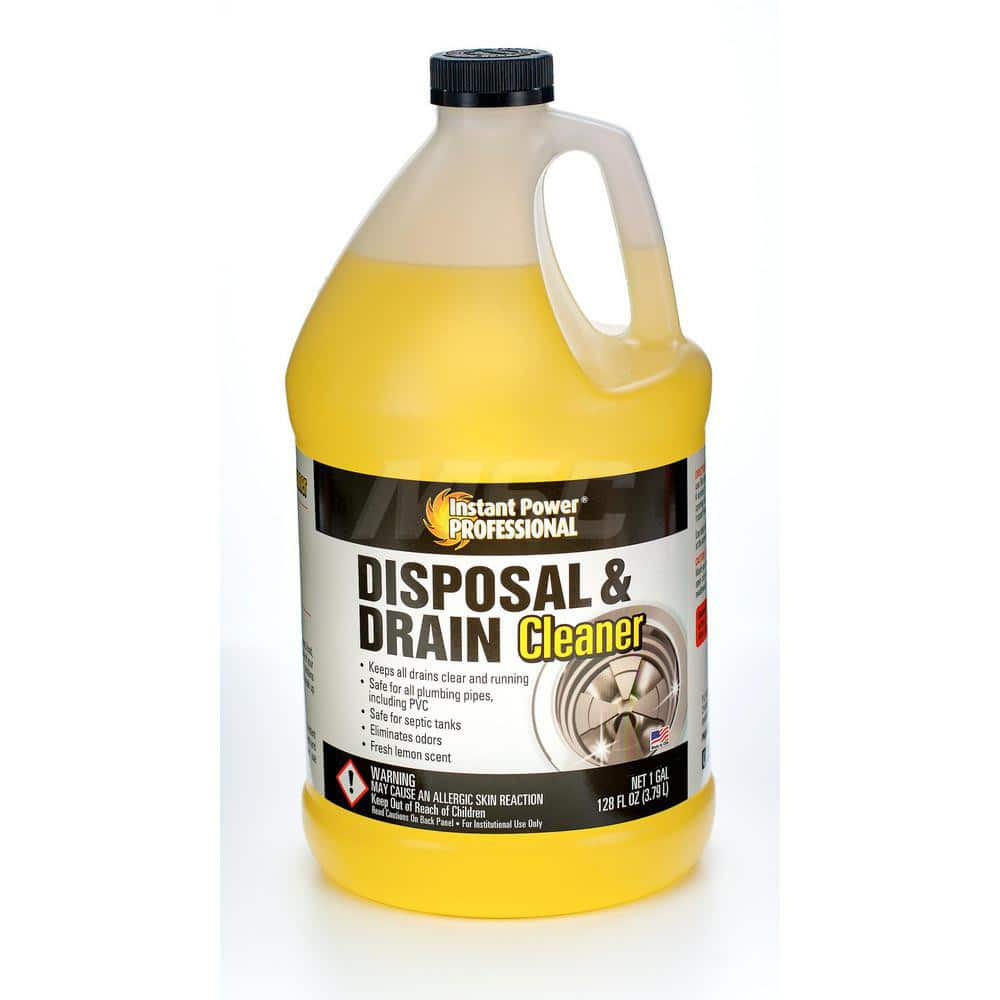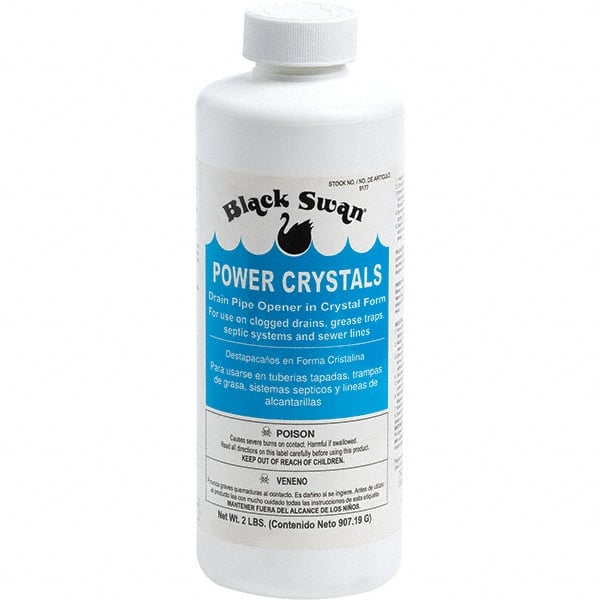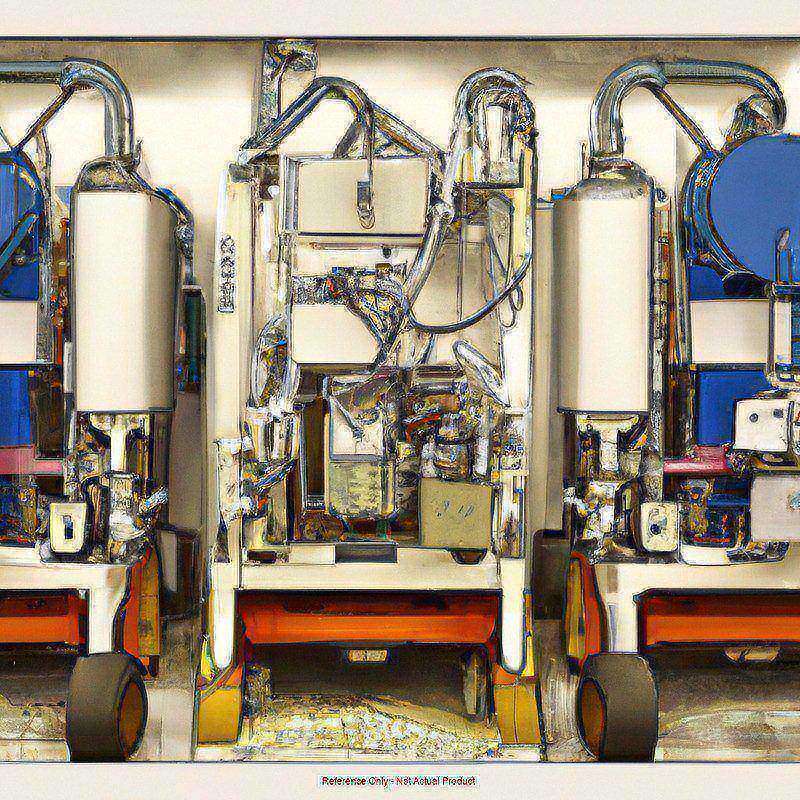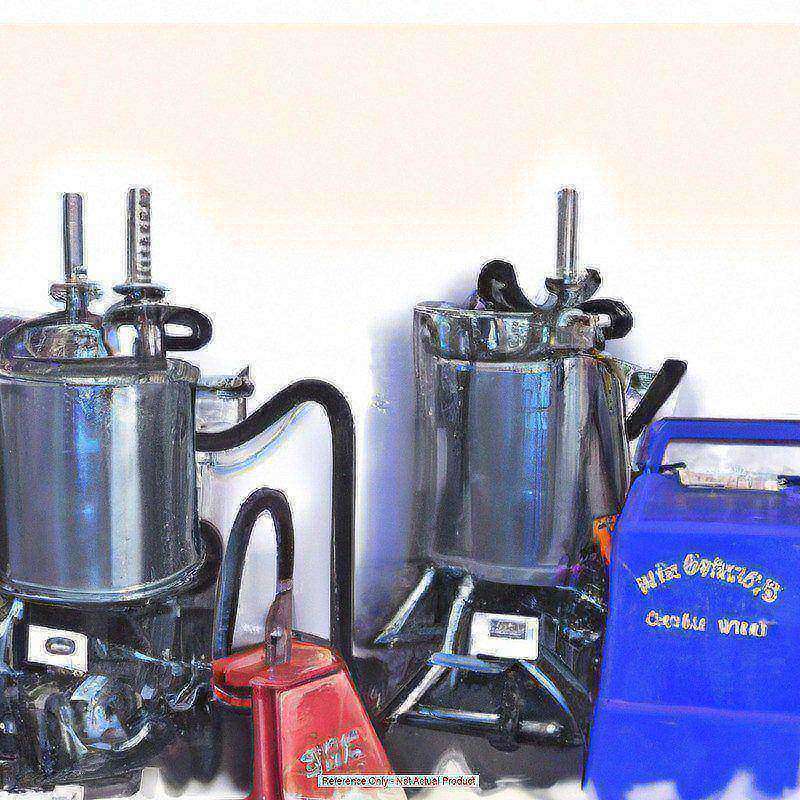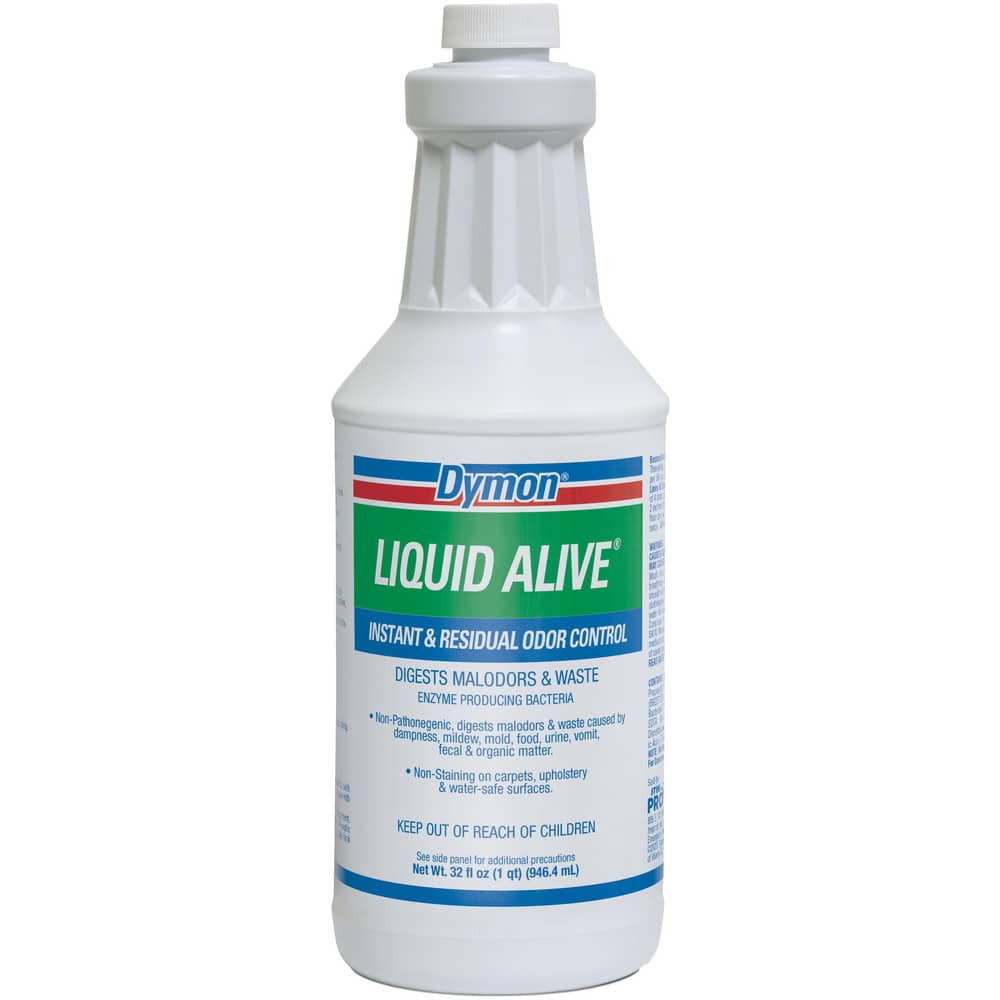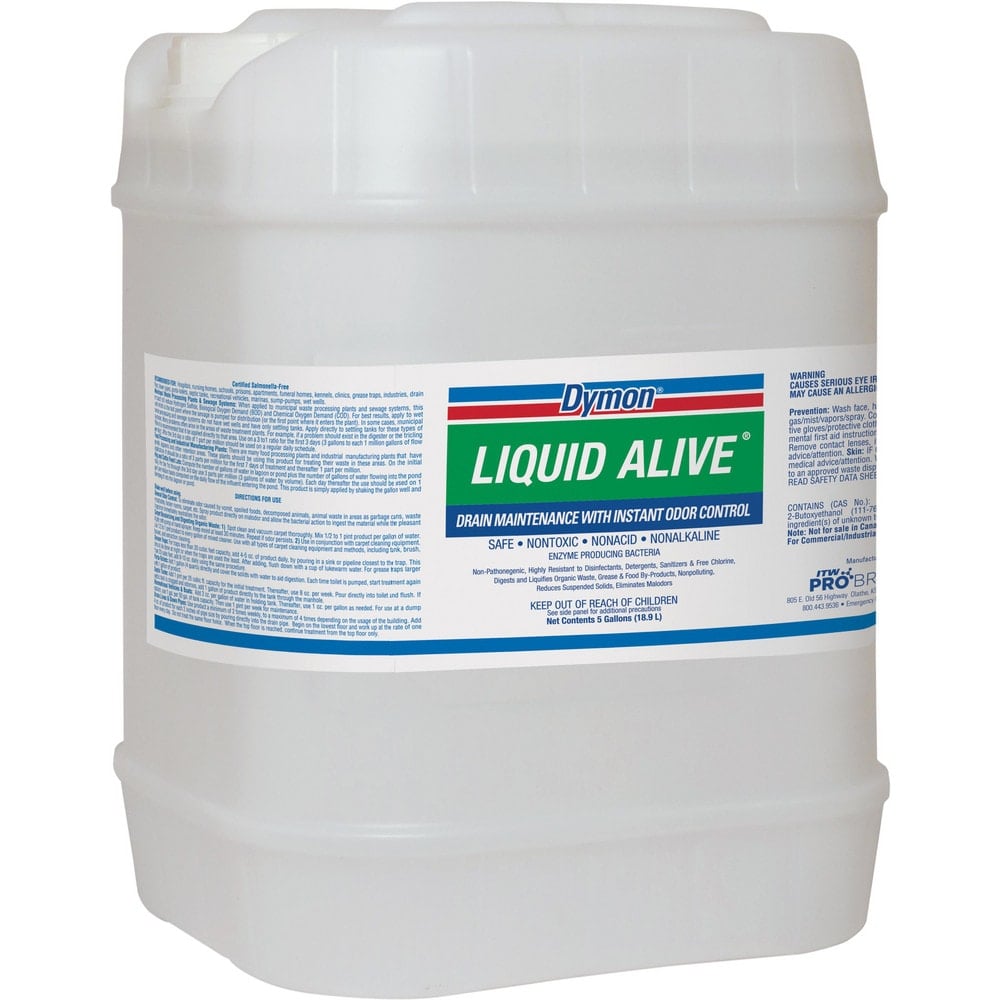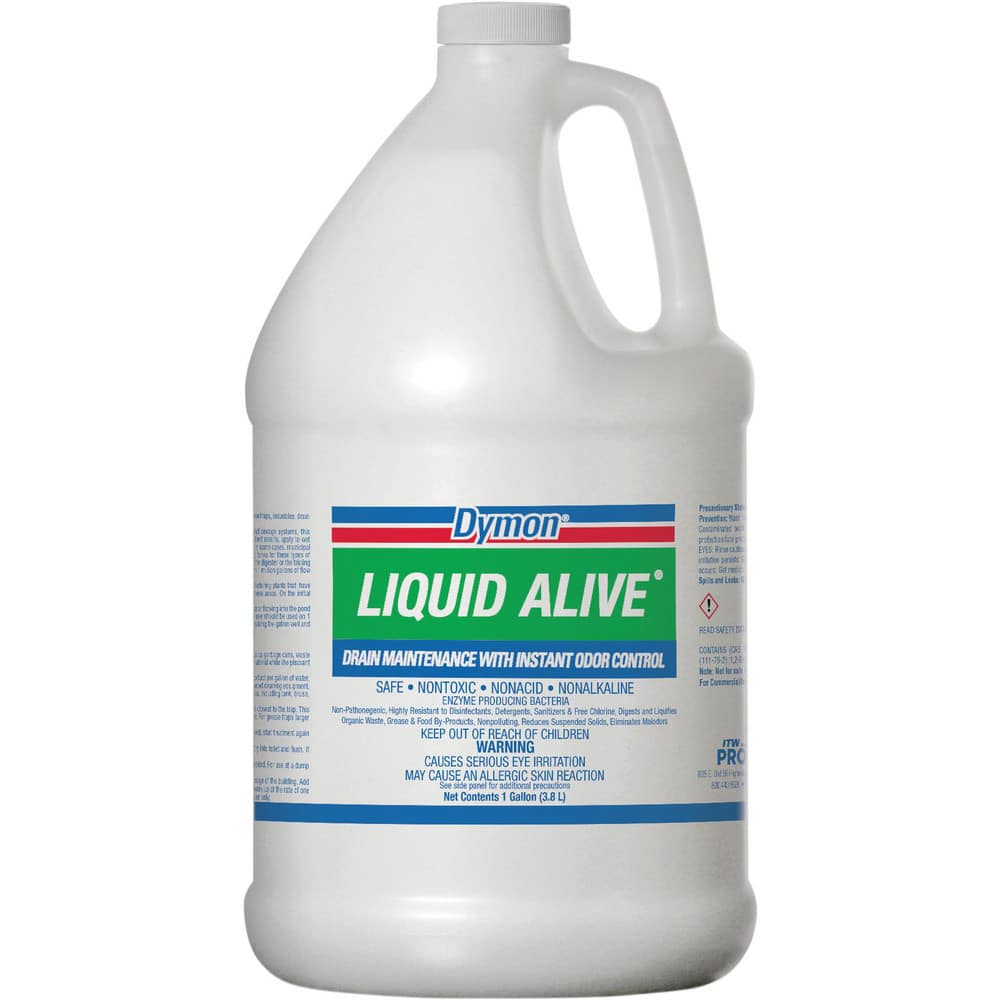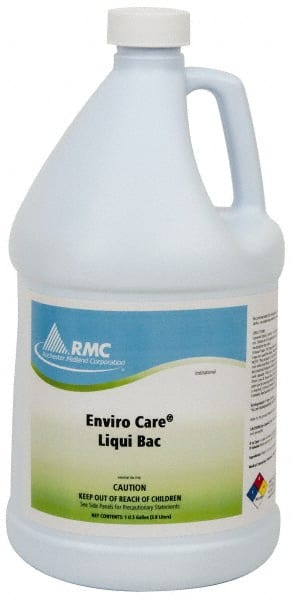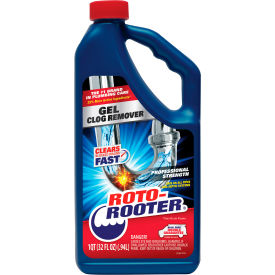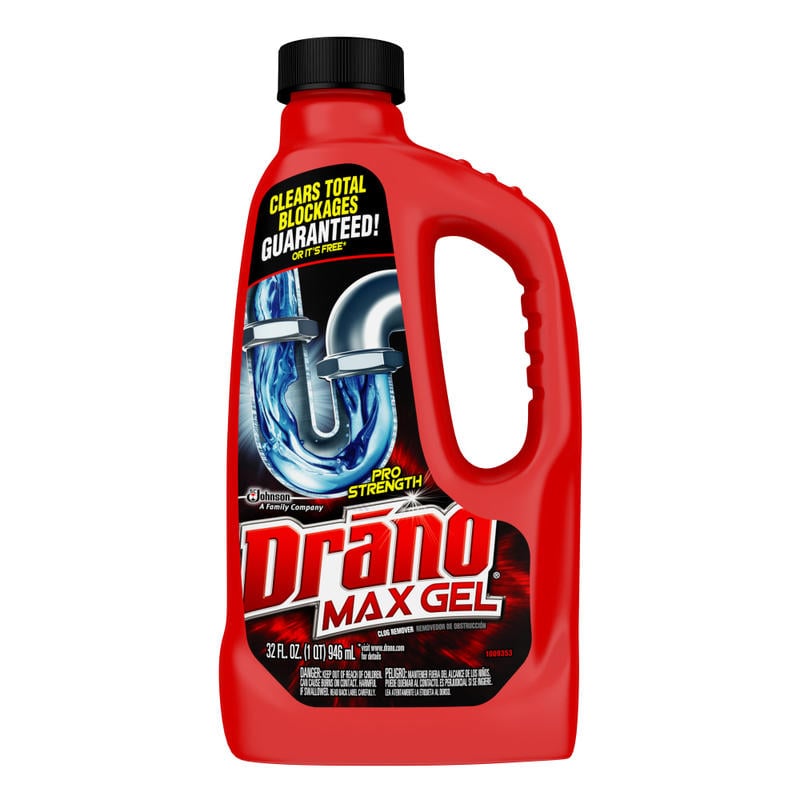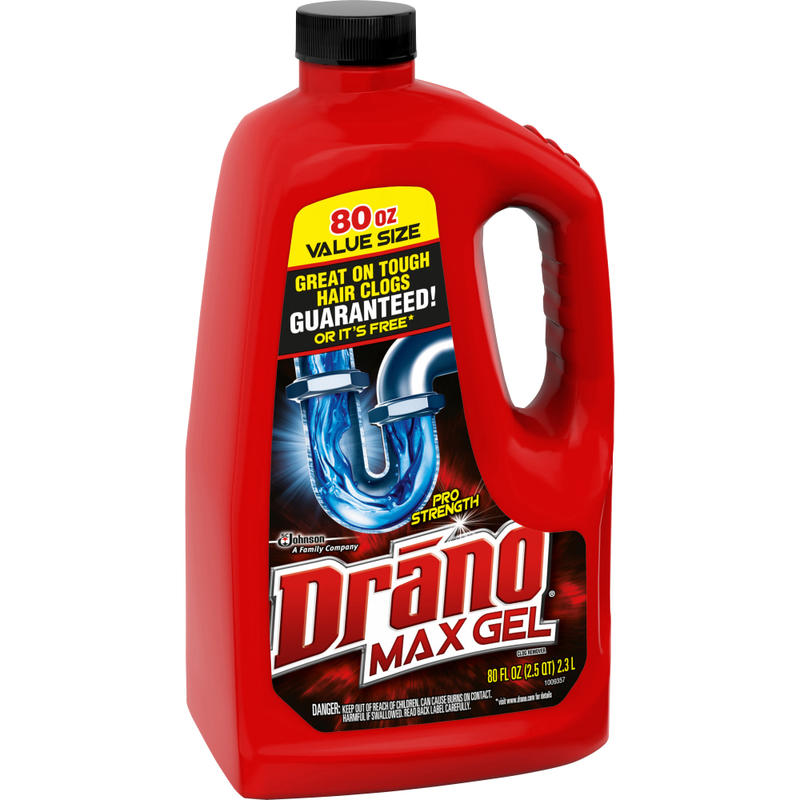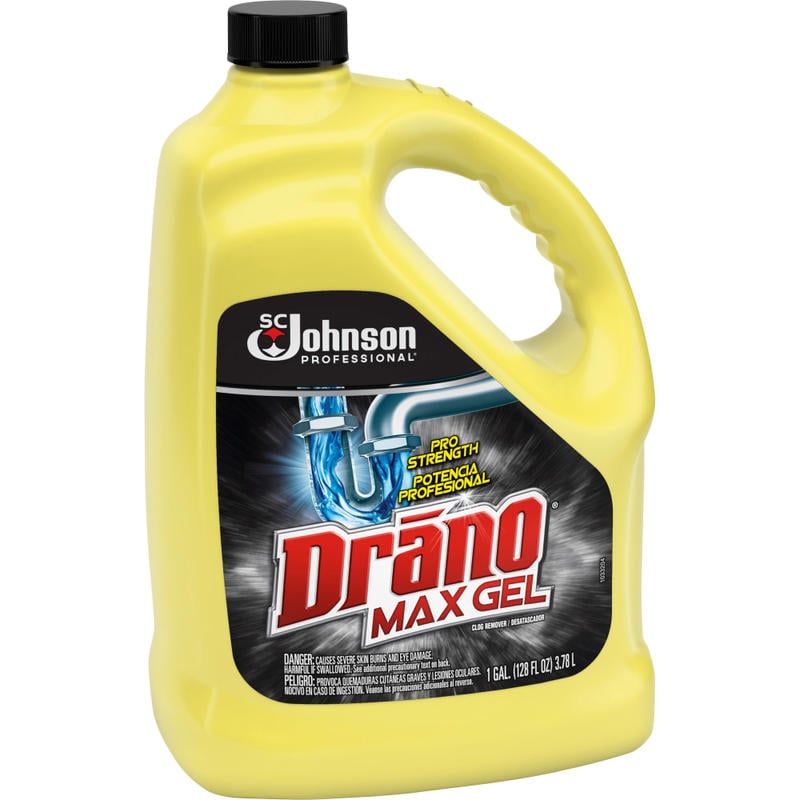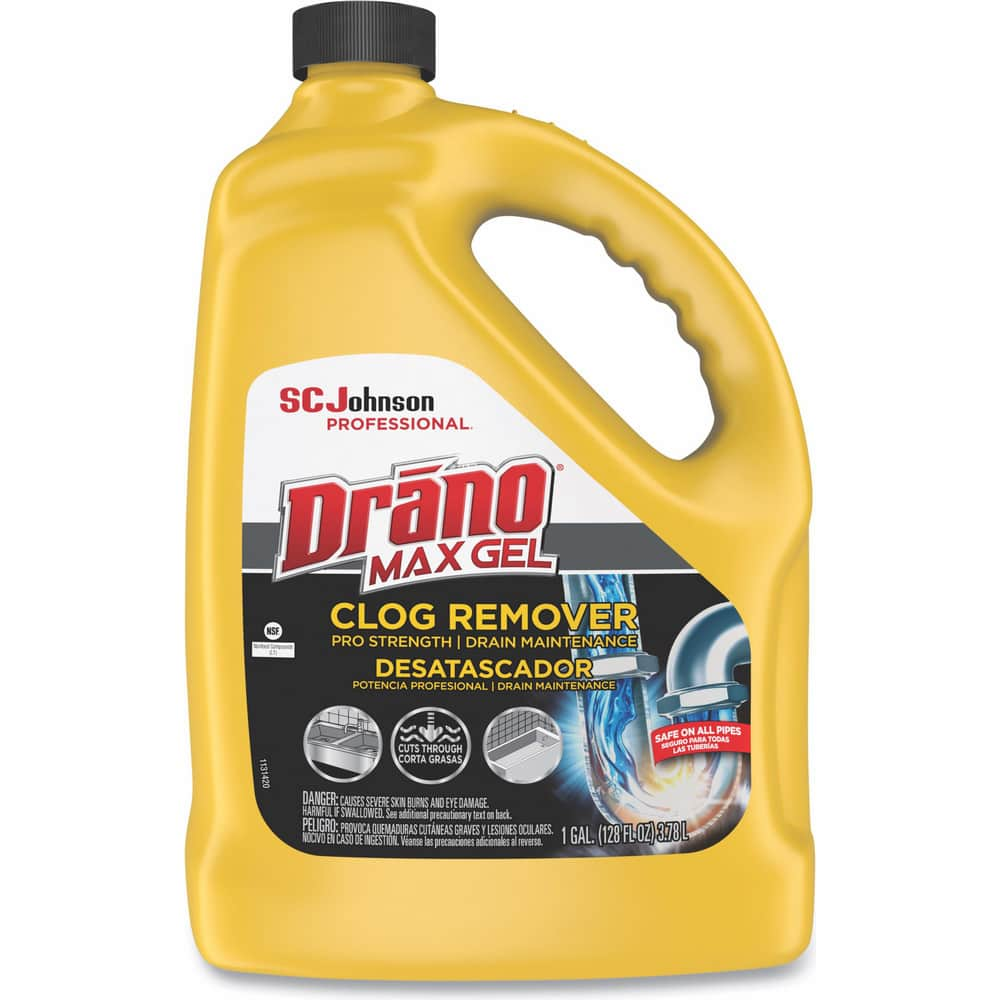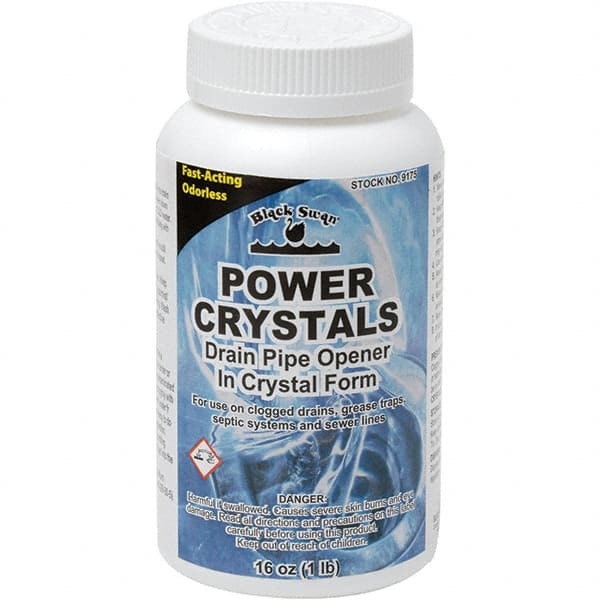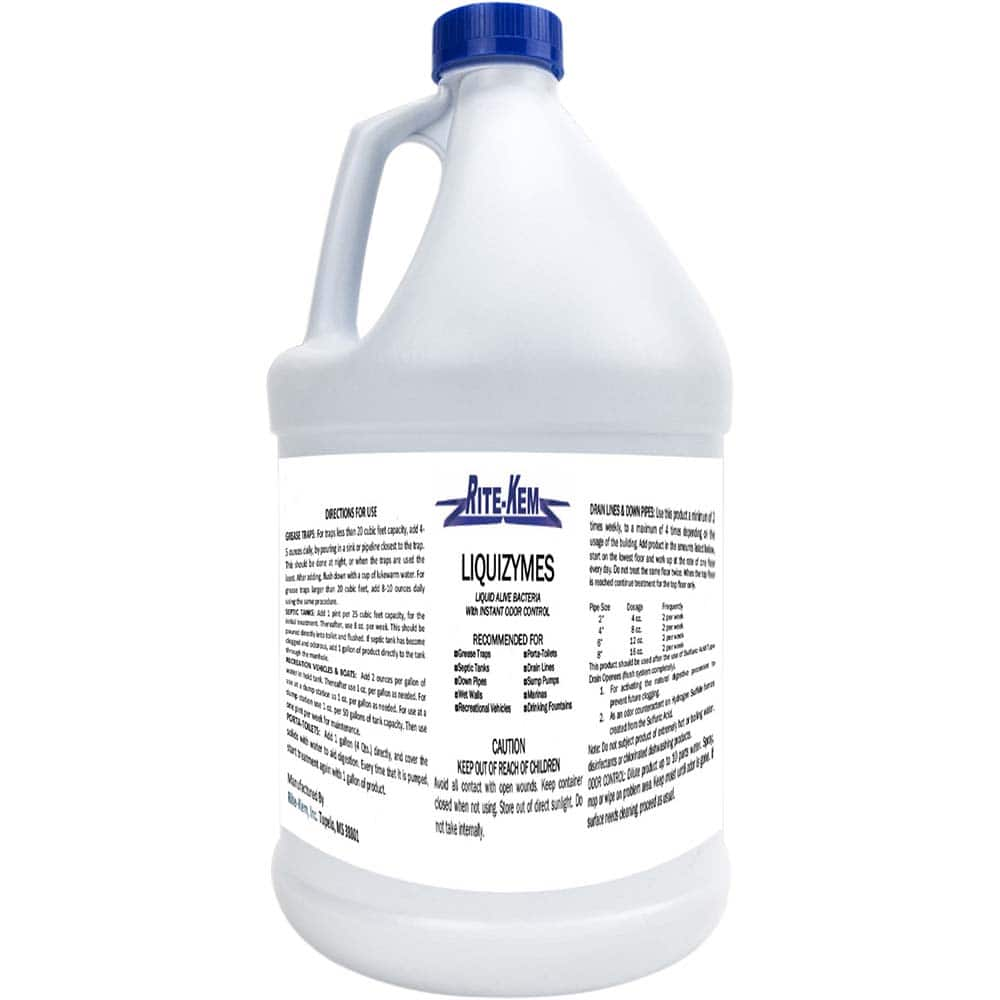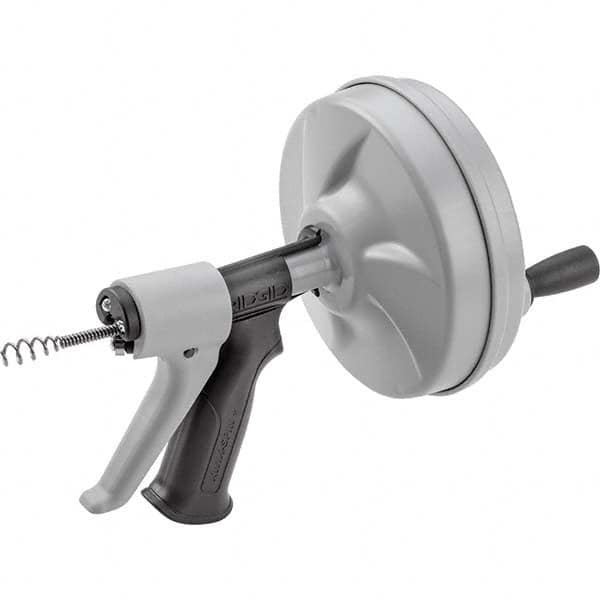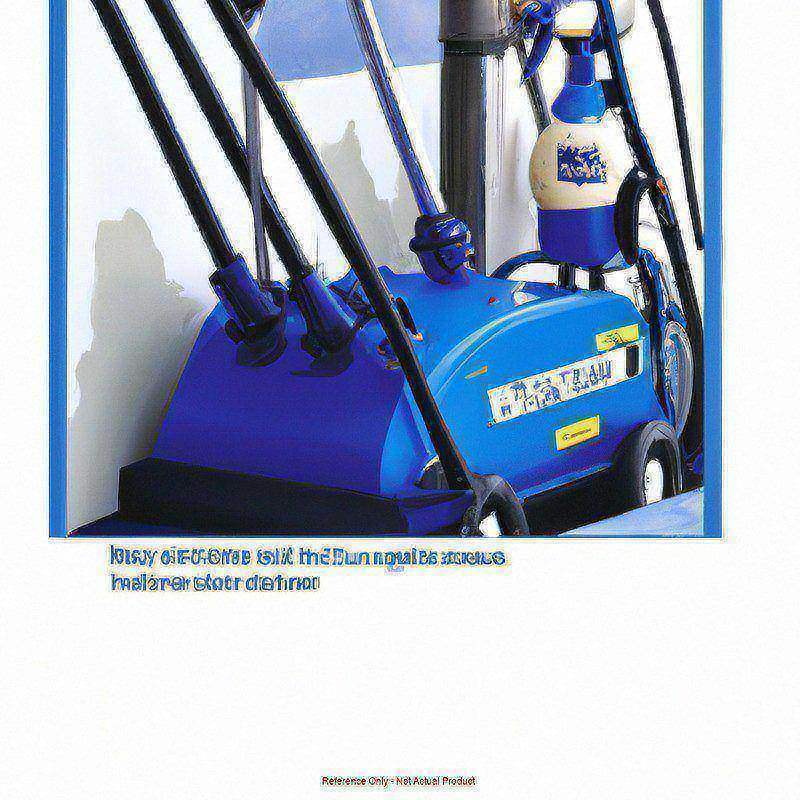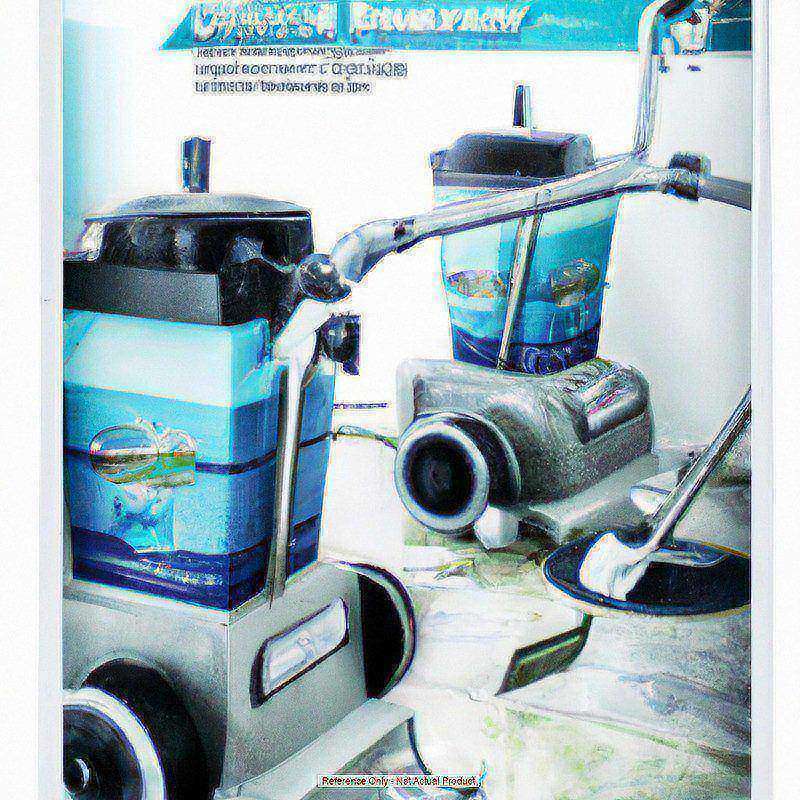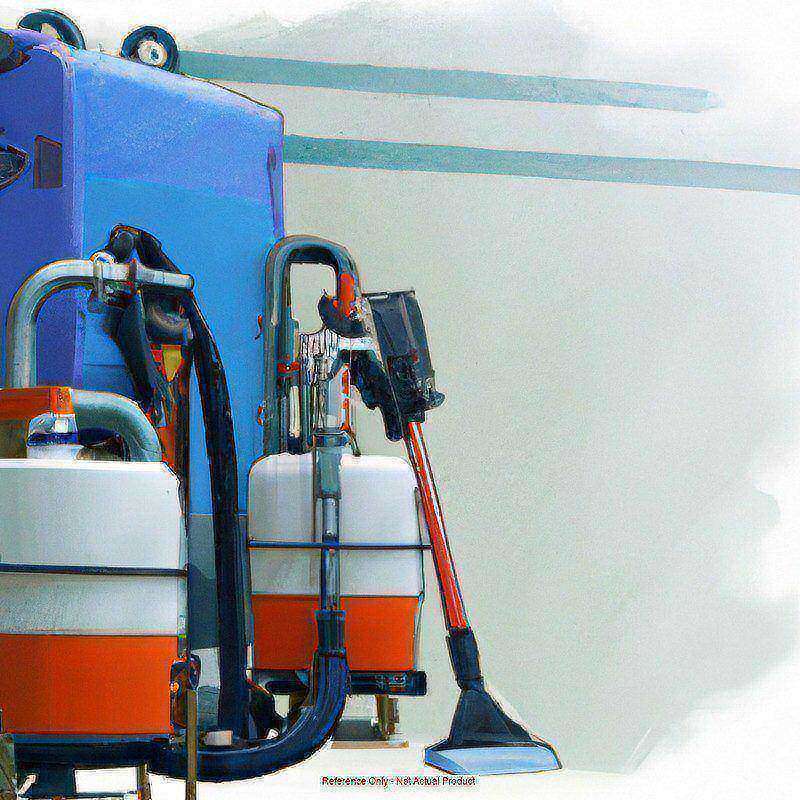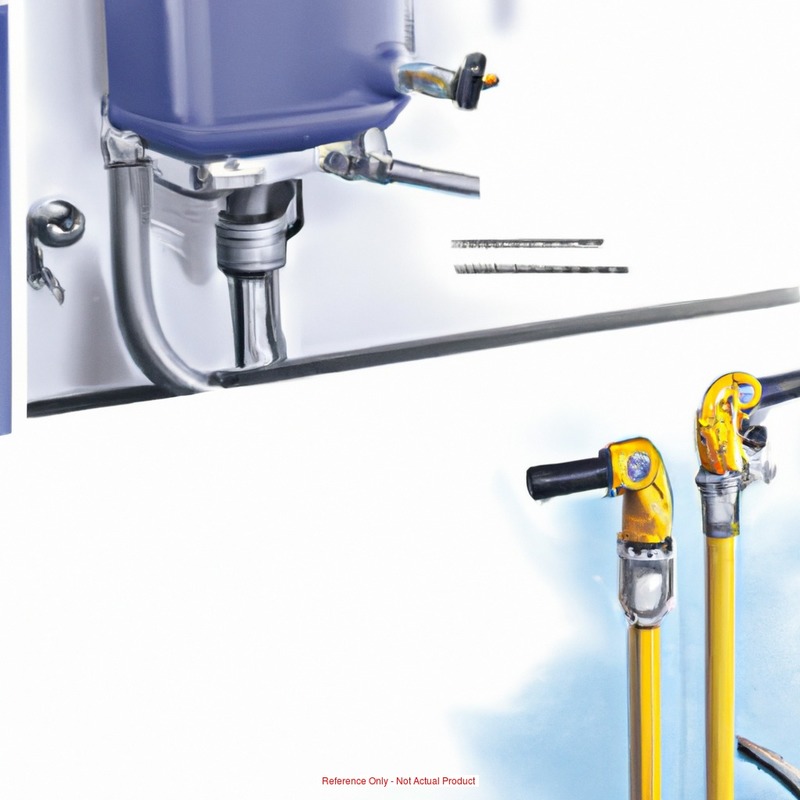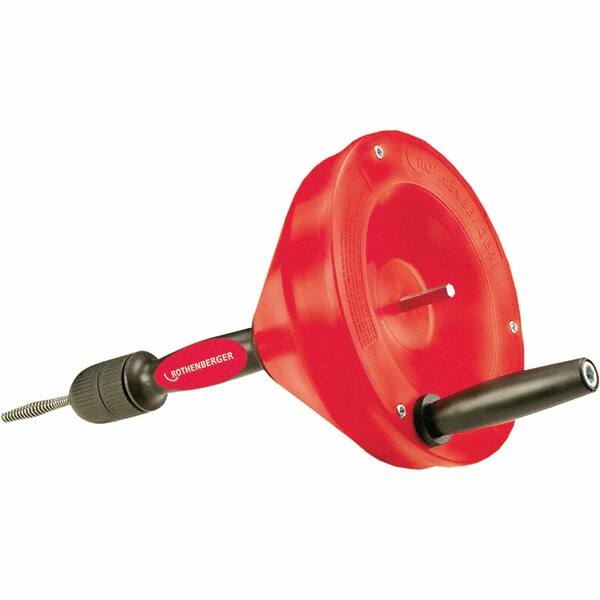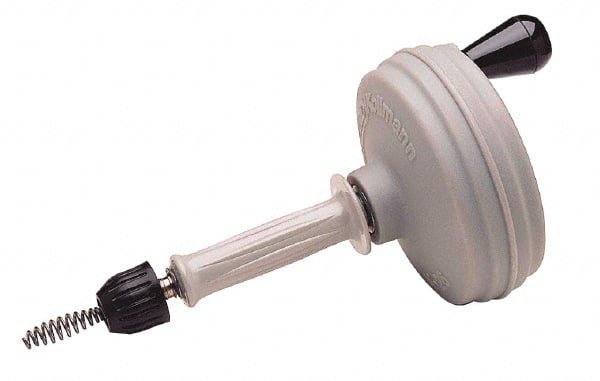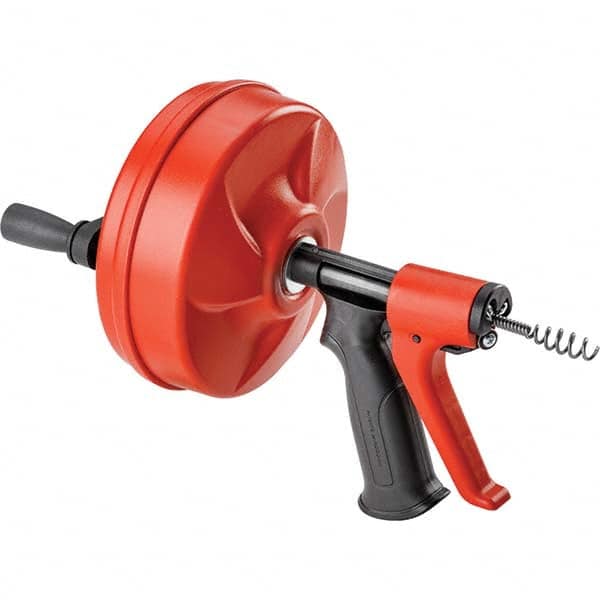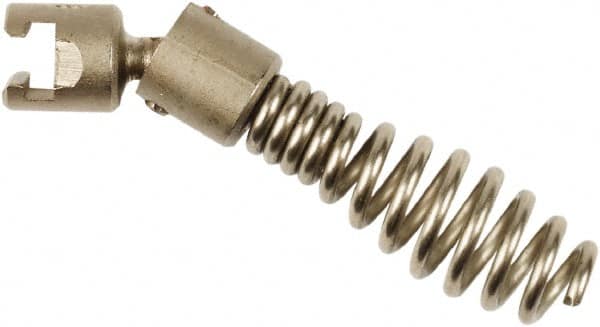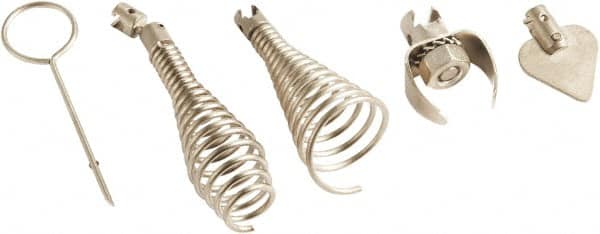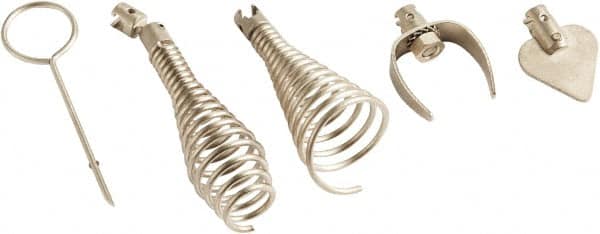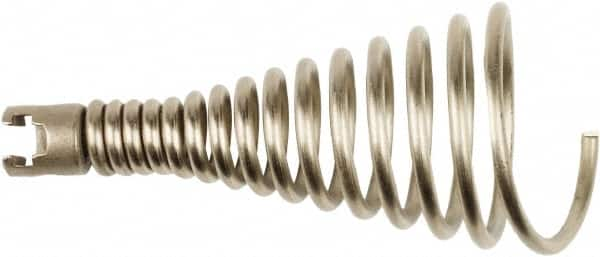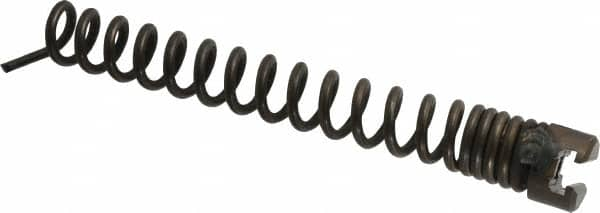Solving Plumbing Nightmares: Your Ultimate Guide to Drain Cleaners & Openers
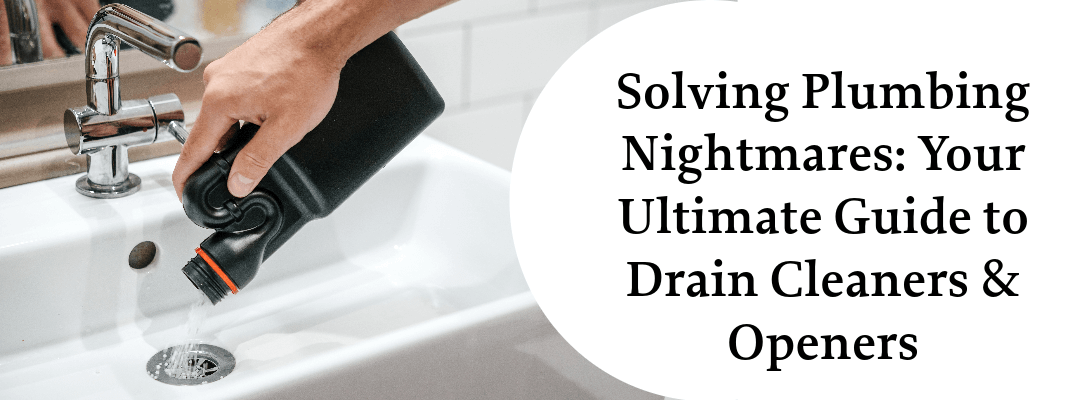
Overview
Picture this: It's a peaceful Sunday morning, and you're about to enjoy a relaxing shower before starting your day. But suddenly, disaster strikes! Your bathroom sink is clogged, and water refuses to drain. Panic sets in as you imagine a hefty plumbing bill and hours of inconvenience. But fear not! In this comprehensive guide, we're about to dive deep into the world of Drain Cleaners & Openers and Manual Drain Cleaners, equipping you with the knowledge and product recommendations to tackle such plumbing nightmares like a pro.
Whether you're a DIY enthusiast looking to save on costly plumbing services or a homeowner who wants to be prepared for emergencies, this blog post is your go-to resource. We'll explore the different types of drain cleaners, from powerful chemical options to eco-friendly alternatives. We'll also take a closer look at the trusty Manual Drain Cleaners, perfect for those who prefer a hands-on approach to plumbing issues.
Get ready to bid farewell to stubborn clogs, slow drains, and plumbing hassles as we delve into the world of Drain Cleaners & Openers. So, grab your toolkit and let's get started on a journey to a clog-free, stress-free life!
In this blog post, we'll provide in-depth product overviews, category overviews, and practical DIY tips to help your readers make informed decisions about drain cleaners and openers. If you'd like more information on specific products or recommendations, feel free to ask!
Table of Contents
- Understanding Drain Cleaners & Manual Drain Cleaners
- Safety and Cleanliness Precautions
- Assessing Drain Problems and Selecting the Right Tool
- Preventing Drain Clogs: Tools and Tricks for Maintenance
- The Ramifications of Untreated Drain Issues: Financial, Safety, and Hygienic Consequences
1. Understanding Drain Cleaners & Manual Drain Cleaners
In the world of plumbing and home maintenance, few things are as frustrating as dealing with clogged drains. Whether it's a kitchen sink that won't drain or a shower that's pooling with water, a reliable solution is needed. That's where Drain Cleaners & Manual Drain Cleaners come to the rescue. In this comprehensive guide, we'll explore these essential plumbing tools, their typical applications, and provide product recommendations of the top drain cleaners to help you keep your pipes clear and water flowing smoothly.
1.1. Drain Cleaners & Openers
1.1.1. Drain Cleaners
Drain cleaners are essential household products designed to tackle one of the most common and frustrating issues homeowners face: clogged drains. Whether it's a kitchen sink, bathroom drain, or utility room sink, drain cleaners come to the rescue. These chemical solutions are formulated to dissolve and remove various types of clogs and obstructions, ensuring that water can flow freely through your pipes once again.
Typical Applications
- Kitchen Sinks: Kitchen drains are notorious for collecting grease, food particles, and soap scum over time. This buildup can lead to stubborn clogs that disrupt your daily routine. Drain cleaners, available in liquid, gel, or foam form, work wonders in breaking down these blockages. They effectively dissolve the grease and grime, allowing your sink to drain smoothly.
- Bathroom Drains: The bathroom is another hotspot for drain issues. Hair, soap residue, and other debris can accumulate and create annoying clogs in your shower, bathtub, or bathroom sink. Drain openers, a type of drain cleaner, are specifically designed to clear these obstructions. Their chemical composition is tailored to dissolve hair and soap scum, restoring proper drainage.
- Utility Room Drains: Utility sinks and laundry room drains are prone to blockages caused by lint, debris, and detergent buildup. These clogs can hinder the functionality of your laundry appliances. Drain cleaners designed for utility sinks can help maintain proper drainage, ensuring that your washing machine and utility sink operate smoothly.
Product Recommendations for Drain Cleaners
When choosing a drain cleaner, consider the severity of the clog and the type of drain you need to unclog. Here are some product recommendations:
- Liquid Drain Cleaners: Liquid drain cleaners are versatile and suitable for a wide range of clogs. They work well on minor to moderate blockages in kitchen and bathroom drains. Popular brands like Drano and Liquid-Plumr offer effective liquid drain cleaners.
- Gel Drain Cleaners: Gel-based drain cleaners cling to pipe walls, providing longer contact time for dissolving tough clogs. They are ideal for stubborn blockages and are commonly used in kitchen sinks. Look for products like CLR Power Plumber Gel or Green Gobbler Drain Clog Dissolver.
- Foaming Drain Cleaners: Foaming drain cleaners expand inside the pipe, reaching deep into the clog to break it down. They are effective for both minor and major blockages. Consider products like Bio-Clean Drain Septic Bacteria or Zep Drain Defense Pipe Build-up Remover.
Always follow the manufacturer's instructions and safety guidelines when using drain cleaners. Additionally, consider using drain maintenance products regularly to prevent future clogs and maintain healthy pipes. Looking for effective drain cleaners & openers? Check out these top-rated products:
1.1.2. Drain Openers
In the world of plumbing and home maintenance, drain cleaners and openers are indispensable tools for tackling stubborn drain blockages. These products belong to the category of cleaning chemicals and are specifically tailored to address drain-related issues. Whether you're a homeowner dealing with persistent clogs or a plumbing professional handling serious blockages in residential or commercial properties, drain openers are your go-to solution to ensure proper drainage.
Typical Applications
- Commercial Facilities: Restaurants, industrial kitchens, and businesses that generate a high volume of grease and food waste are often in need of industrial-strength drain cleaners and openers. These heavy-duty solutions can efficiently dissolve and remove tough clogs caused by fats, oils, and food debris. They are essential for maintaining the smooth operation of commercial drain systems.
- Home Maintenance: Homeowners frequently encounter drain clogs in their kitchens, bathrooms, and utility rooms. Whether it's a pesky hair clog in the shower or a kitchen sink blocked by grease and soap scum, drain openers are the answer. These products come in various formulations, from liquids to gels, designed to dissolve specific types of blockages.
- Plumbing Professionals: Plumbers rely on specialized drain cleaners and openers to address a wide range of drain issues. From residential homes to large commercial buildings, plumbers encounter complex clogs that require powerful solutions. These professionals choose drain openers that can effectively clear obstructions and restore proper drainage.
When selecting a drain opener, it's essential to consider the nature of the clog and the type of drain you're dealing with. Some drain openers are formulated for specific types of blockages, such as grease or hair, while others offer a broader spectrum of cleaning capabilities.
Whether you're a homeowner or a professional plumber, having a reliable drain opener on hand is crucial for maintaining the functionality of your plumbing system. Regular use of these products can help prevent future clogs and ensure that water flows freely through your pipes, saving you time and money on costly repairs.
Product Recommendations for Drain Openers
Looking for effective drain openers? Check out these top-rated products:
1.3. Drain Cleaners & Openers: A Comprehensive Guide
Drain Cleaners & Openers are essential tools for maintaining smooth drainage in your home or business. These chemical solutions are designed to dissolve and remove clogs and obstructions from your drains effectively. In this comprehensive guide, we'll explore the world of Drain Cleaners & Openers, covering their overview, typical applications, and providing product recommendations to help you keep your drains flowing freely.
1.3.1. Overview of Drain Cleaners & Openers
Drain Cleaners & Openers come in various forms, including liquids, gels, and foams. They are specially formulated to tackle common drain issues like grease buildup, hair clogs, soap scum, and more. Whether it's your kitchen sink, bathroom drain, or utility room sink, these products can be your go-to solution for restoring proper drainage.
Typical Applications
- Kitchen Sinks: Grease and food particles often lead to stubborn clogs in kitchen sinks. Drain cleaners can quickly break down these blockages, preventing backups and foul odors.
- Bathroom Drains: Soap residue and hair are common culprits for bathroom drain clogs. Drain openers can effectively clear these obstructions, ensuring your shower and sink drains work flawlessly.
- Utility Room Drains: Utility sinks and laundry room drains can become clogged with lint and debris over time. Drain cleaners can help maintain proper drainage in these crucial areas.
- Commercial Facilities: Restaurants and businesses with high grease and food waste volumes benefit from industrial-strength drain cleaners. These powerful solutions keep commercial drains clear and prevent costly disruptions to operations.
- Home Maintenance: Homeowners dealing with persistent drain clogs can rely on these products to restore proper drainage, eliminating the need for expensive plumbing services.
- Plumbing Professionals: Plumbers often use specialized drain cleaners and openers to address serious clogs in residential and commercial properties. These professional-grade solutions save time and ensure effective results.
Product Recommendations for Drain Cleaners & Opener
Looking for effective drain cleaners and openers? Here are some top-rated products that can help you maintain clear and functional drains:
Liquids:
Gels:
All Drain Cleaners and Openers:
By choosing the right Drain Cleaners & Openers and applying them as needed, you can keep your drains clear, prevent costly plumbing issues, and maintain a hygienic living or working environment. Don't let clogs disrupt your daily life; make informed decisions and keep your plumbing flowing smoothly.
1.4. Manual Drain Cleaners
1.4.1. Overview of Manual Drain Cleaners
Manual Drain Cleaners are hand-operated tools designed for removing blockages from drains and pipes. These tools are ideal for DIY enthusiasts and homeowners who prefer a more hands-on approach to drain maintenance.
Typical Applications
- Residential Drains: Manual drain cleaners are excellent for tackling clogs in sinks, showers, and bathtubs.
- Small Business Owners: Owners of small businesses or rental properties can benefit from having manual drain cleaners on hand for quick fixes.
- Emergency Situations: When a clog occurs at an inconvenient time, manual drain cleaners can be a lifesaver until professional help arrives.
Product Recommendations for Manual Drain Cleaners
If you're considering a manual drain cleaner, here are some top picks:
1.5. Manual & Hand Drain Cleaners
1.5.1. Overview of Manual & Hand Drain Cleaners
Manual & Hand Drain Cleaners encompass a wide range of tools and equipment designed to tackle drain clogs with manual force. From drain snakes to augers, these tools provide effective solutions for various types of blockages.
Typical Applications
- Plumbing Contractors: Professional plumbers often use manual and hand drain cleaners to address challenging clogs in residential and commercial properties.
- Maintenance Crews: Facilities and maintenance teams in large buildings and institutions rely on these tools for routine drain maintenance.
- Homeowners and DIYers: Homeowners and DIY enthusiasts appreciate the versatility and cost-effectiveness of manual and hand drain cleaners for occasional use.
Product Recommendations for Manual & Hand Drain Cleaners
Discover the right manual and hand drain cleaners for your needs with these top recommendations:
Wrapping it up
In this extensive guide, we've covered the essential categories of Drain Cleaners & Openers and Manual Drain Cleaners, providing insights into their applications and top product recommendations. Whether you're dealing with a stubborn kitchen sink clog or need a reliable tool.
2. Safety and Cleanliness Precautions
Safety and Cleanliness Precautions are vital when dealing with drain problems and utilizing drain cleaning tools. Neglecting these precautions can lead to accidents, health hazards, and environmental issues. Here, we will delve into these precautions in more detail to emphasize their importance in maintaining a safe and hygienic environment.
2.1. Ventilation:
Proper ventilation is crucial when working with drain cleaners, especially those containing strong chemicals. Many drain cleaners emit fumes that can be harmful to inhale. Follow these guidelines:
- Work in a Well-Ventilated Area: Open windows and doors to ensure adequate airflow. Use fans or exhaust systems if available.
- Wear a Mask if Necessary: In cases where fumes are particularly strong, consider wearing a mask designed to filter out chemical fumes.
2.2. Protective Gear:
Protective gear is your first line of defense against potential hazards. When handling drain cleaners or drain cleaning tools, the following protective gear is essential:
- Safety Gloves: Wear sturdy, chemical-resistant gloves to shield your hands from contact with drain cleaners and any debris you may encounter.
- Safety Glasses: Protect your eyes from splashes, chemical contact, or debris that may be dislodged during the cleaning process.
2.3. Avoid Mixing Cleaners:
Never mix different types of drain cleaners, as this can lead to chemical reactions that produce harmful gases or heat. Stick to a single type of cleaner for your specific drain issue and follow the manufacturer's instructions carefully.
- Read Labels: Before using any drain cleaner, carefully read the label to understand its chemical composition and recommended use. Mixing different chemicals can be dangerous.
2.4. Keep Children and Pets Away:
Ensure that children and pets are kept at a safe distance from the work area. Drain cleaning can involve potentially hazardous materials and situations, and it's essential to prevent accidents.
- Secure the Area: Use gates, barriers, or other childproof measures to keep young children and pets away from the vicinity of the drain problem.
- Educate Family Members: Teach family members, especially children, about the importance of not approaching the area where drain cleaning is taking place.
2.5. Dispose of Waste Properly:
Proper disposal of waste materials generated during drain cleaning is essential for environmental and safety reasons. Follow these disposal guidelines:
- Hazardous Waste Disposal: If you use drain cleaners that are considered hazardous waste, follow your local regulations for proper disposal. Many areas have designated collection points for hazardous materials.
- Debris and Used Materials: Dispose of any debris, used cleaning materials, or paper towels in a trash bag or container. Seal it securely to prevent any contaminants from escaping.
2.6. Wash Hands Thoroughly:
After completing drain cleaning tasks, thoroughly wash your hands with soap and water. Drain cleaners and debris can leave residue on your skin, which can be harmful if not properly cleaned.
- Hand Washing: Spend ample time washing your hands, making sure to clean all areas, including under your nails.
- Avoid Touching Face: Avoid touching your face, eyes, nose, or mouth during the cleaning process to prevent accidental contact with contaminants.
2.7. Emergency Response:
Be prepared for emergencies that may arise during drain cleaning. Have a plan in place and the necessary tools ready to address unexpected situations.
- Emergency Contacts: Keep a phone nearby so that you can quickly call for professional help in case of accidents, severe reactions to chemicals, or unexpected problems that you cannot handle yourself.
- First Aid Kit: Have a basic first aid kit on hand with items like bandages, antiseptic wipes, and eye wash, in case of minor injuries.
By diligently following these safety and cleanliness precautions, you can significantly reduce the risks associated with drain cleaning and ensure a safe and hygienic environment for yourself and your family. Prioritizing safety not only protects your well-being but also contributes to effective and successful drain maintenance.
3. Assessing Drain Problems and Selecting the Right Tool
Dealing with drain problems can be a daunting task, but with the right approach and tools, you can effectively address the issue. Here's a step-by-step guide on how to assess the problem and determine the correct type of tool to use:
Step 1: Identify the Symptoms
- Slow Drainage: Determine if the water is draining slowly or if it's completely blocked. Slow drainage often indicates a partial clog, while no drainage suggests a severe blockage.
- Unpleasant Odors: Foul odors emanating from the drain can indicate trapped debris or organic matter in the pipes.
Step 2: Gather Tools and Safety Gear
Before you start, gather the necessary tools and safety gear:
- Drain Cleaner or Manual Drain Cleaner: Depending on the severity of the clog, choose the appropriate drain cleaner or manual drain cleaning tool.
- Safety Gloves: Protect your hands from chemicals and debris with sturdy gloves.
- Safety Glasses: Shield your eyes from potential splashes and debris.
- Plunger: A plunger is a versatile tool for minor clogs, creating pressure to dislodge blockages.
- Bucket and Towels: Have a bucket ready to catch water, and towels to contain any spills.
Step 3: Assess the Location
Identify the location of the clogged drain:
- Kitchen Sink: Food particles, grease, and soap scum are common culprits.
- Bathroom Sink or Shower: Hair and soap residue are frequent causes of clogs.
- Toilet: Toilet clogs can result from excessive toilet paper or foreign objects.
- Utility Sink: Lint, debris, and detergent buildup may be the issue.
Step 4: Select the Right Tool
Choose the appropriate tool based on the location and severity of the clog:
- Drain Cleaner: For minor clogs and regular maintenance. Follow the product instructions carefully, as different drain cleaners have varying application methods.
- Manual Drain Cleaner: Ideal for stubborn clogs. Insert the tool into the drain and rotate it to break through blockages.
- Plunger: Use a plunger for toilets and sinks. Ensure a tight seal and apply quick, forceful plunges to dislodge clogs.
Step 5: Apply the Solution
Follow these steps to use the selected tool:
Using Drain Cleaner:
- Read the Instructions: Always read and follow the manufacturer's instructions on the product label.
- Pour the Cleaner: Pour the recommended amount of cleaner into the drain. Wait for the specified time, usually around 15 minutes.
- Flush with Water: After the waiting period, flush the drain with hot water to clear away the dissolved debris.
Using Manual Drain Cleaner:
- Insert the Tool: Insert the manual drain cleaner into the drain until you feel resistance.
- Rotate and Push: Rotate the tool while applying gentle pressure. This action helps break up and clear the clog.
- Retrieve Blockages: Carefully pull the tool out of the drain, and you may find the dislodged blockage attached.
Using Plunger:
- Create a Seal: Ensure a tight seal between the plunger and the drain or toilet.
- Plunge: Push and pull the plunger forcefully to create pressure and dislodge the clog.
- Test Drainage: After a few plunges, test the drainage to see if the clog is cleared. Repeat if necessary.
4. Preventing Drain Clogs: Tools and Tricks for Maintenance
Dealing with a clogged drain can be a hassle, but what if you could avoid them altogether? Regular maintenance and preventive measures can help keep your drains clear and your plumbing system running smoothly. In this section, we'll explore some tools, tricks, and recommended products to prevent drain clogs from happening in the first place.
4.1. Maintenance Tools and Products
1. Drain Screens:
One of the simplest and most effective ways to prevent clogs is by using drain screens or strainers. These inexpensive tools fit over your drain openings and catch debris like hair, food particles, and soap scum before they can enter the pipes. They are particularly useful in the bathroom and kitchen sinks and showers.
2. Enzyme-Based Drain Cleaners:
Enzyme-based drain cleaners are eco-friendly alternatives to harsh chemicals. Regularly using these products can help break down organic matter and prevent the buildup of clogs. They are safe for septic systems and are less likely to damage pipes.
3. Hot Water Flushing:
Once a week, flush your drains with hot water to help clear away accumulated soap scum and grease. Boiling water can be poured directly down the drain to melt potential clogs. This simple practice can go a long way in maintaining clear pipes.
4. Regular Plumbing Inspection:
Consider scheduling regular plumbing inspections by a professional. They can identify potential issues before they become major problems, such as tree roots invading your sewer line or corroded pipes.
4.2. Preventive Tricks
1. Mind What Goes Down the Drain:
Educate household members about what should and shouldn't go down the drain. Avoid pouring grease, coffee grounds, eggshells, and fibrous foods (like potato peels) down the kitchen sink. In the bathroom, use a trash can for items like cotton balls and dental floss.
2. Regular Cleaning:
Clean your bathroom and kitchen sinks and shower drains regularly. Remove hair and debris caught in the drain screens or strainers.
3. Grease Disposal:
Dispose of cooking grease properly by pouring it into a container and discarding it in the trash when it solidifies. Avoid pouring hot grease down the drain, as it can congeal and create blockages.
4. Hair Prevention:
Install a hair trap or drain cover in your shower or bathtub to catch hair before it enters the drain. Regularly clean and remove trapped hair to maintain proper drainage.
5. Septic System Maintenance:
If you have a septic system, be mindful of what you flush down the toilet. Avoid flushing items like sanitary products, baby wipes, and excessive amounts of toilet paper. Use septic-safe toilet paper.
6. Professional Tree Root Removal:
If you have trees near your sewer line, consider professional tree root removal services to prevent invasive roots from causing damage and clogs.
4.3. Recommended Products for Preventive Maintenance
Here are some recommended products for preventive maintenance:
- Drain Screens: Invest in quality drain screens or strainers for your sinks and showers.
- Enzyme-Based Drain Cleaners: Choose enzyme-based drain cleaners for regular maintenance.
- Hair Traps: Install hair traps in your shower or bathtub drains.
By incorporating these maintenance tools, tricks, and products into your household routine, you can significantly reduce the risk of drain clogs and enjoy uninterrupted plumbing performance. Remember that prevention is key to a hassle-free and smoothly running plumbing system.
5. The Ramifications of Untreated Drain Issues: Financial, Safety, and Hygienic Consequences
Ignoring drain problems and leaving them untreated can lead to a cascade of issues that impact your finances, safety, and overall hygiene. In this section, we'll delve into the short-term and long-term ramifications of neglecting drain issues and why it's crucial to address them promptly.
5.1. Short-Term Ramifications
1. Financial Burden:
Leaving a clogged drain untreated may seem like a minor inconvenience at first. However, it can escalate into a significant financial burden. The short-term consequences include:
- Plumbing Services: When a clog becomes severe, you may need to hire a professional plumber to resolve the issue. Emergency plumbing services often come at a higher cost than routine maintenance.
- Replacement Costs: In some cases, untreated drain issues can lead to pipe damage or corrosion, requiring costly repairs or even pipe replacements.
- Property Damage: Water overflow due to clogs can damage floors, walls, and ceilings, leading to expensive repairs.
2. Safety Hazards:
Untreated drain issues can pose safety hazards in your home:
- Slip and Fall Risks: Standing water caused by drain blockages can create slippery surfaces, increasing the risk of slip and fall accidents.
- Electrical Hazards: If water comes into contact with electrical outlets or appliances affected by flooding, it can lead to electrical shocks and fires.
- Mold Growth: Excess moisture from untreated drain issues can promote mold growth, which can lead to respiratory problems and allergies.
5.2. Long-Term Ramifications
1. Structural Damage:
Over time, untreated drain problems can cause extensive structural damage to your property:
- Foundation Damage: Water seepage from clogged drains can weaken the foundation, leading to cracks and structural instability.
- Wall and Ceiling Damage: Prolonged water exposure can cause paint to peel, walls to deteriorate, and ceilings to sag.
- Floor Damage: Flooring materials, such as wood and laminate, can warp and rot due to water damage.
2. Health Hazards:
Untreated drain issues can compromise the hygiene and health of your living environment:
- Foul Odors: Blocked drains often emit unpleasant odors, making your living space uncomfortable.
- Bacterial Growth: Stagnant water in clogged drains can become a breeding ground for harmful bacteria, posing health risks to occupants.
- Pest Infestations: Standing water can attract pests like mosquitoes and flies, increasing the risk of disease transmission.
3. Increased Utility Bills:
Persistent drain issues can lead to higher utility bills:
- Water Wastage: Leaky pipes and overflowing drains waste water, causing your water bills to increase.
- Energy Consumption: Increased humidity from drain problems can force your HVAC system to work harder, leading to higher energy bills.
5.3. Hygienic Consequences
1. Bacterial Contamination:
Untreated drain issues can result in bacterial contamination:
- Kitchen Sinks: A clogged kitchen sink can trap food particles, promoting bacterial growth that can contaminate dishes and utensils.
- Bathroom Drains: Blocked bathroom drains can harbor harmful bacteria and contribute to unpleasant odors.
- Health Risks: Bacterial contamination can lead to health issues, particularly for those with compromised immune systems.
2. Pest Attraction:
Clogged drains can attract pests:
- Cockroaches: Cockroaches are drawn to damp areas, and blocked drains provide an ideal environment for them to thrive. Shop pest control products.
- Flies and Mosquitoes: Stagnant water in drains can become breeding grounds for flies and mosquitoes, which can transmit diseases. Shop mosquito control products.
3. Odor Issues:
Blocked drains often emit foul odors, creating an uncomfortable living environment:
- Kitchen Sink: Rotting food particles in a clogged kitchen sink can generate unpleasant smells that permeate the kitchen. Get air fresheners.
- Bathroom Drains: Hair, soap scum, and other debris in bathroom drains can produce noxious odors, making it unpleasant to use the bathroom.
5.4. Financial Consequences
1. Repair Costs:
Neglecting drain issues can lead to costly repairs:
- Pipe Replacement: If clogs lead to pipe corrosion or damage, you may need to replace sections of your plumbing system, which can be expensive.
- Structural Repairs: Water damage to walls, ceilings, and floors requires professional repairs that can drain your finances.
2. Increased Utility Bills:
Untreated drain issues can result in higher utility bills:
- Water Usage: Leaking or clogged pipes can waste water, causing your water bills to rise significantly.
- Energy Consumption: Excessive humidity from drain problems can force your HVAC system to work harder, increasing energy costs.
5.5. Safety Consequences
1. Slip and Fall Risks:
Standing water from untreated drain problems can create slippery surfaces, increasing the risk of slip and fall accidents, which can result in injuries.
2. Electrical Hazards:
Flooding caused by drain issues can lead to water contact with electrical outlets or appliances, posing electrical shock and fire hazards. Protect yourself from fire hazards.
5.6. Hygienic Consequences
1. Bacterial Contamination:
Untreated drain issues can lead to bacterial contamination:
- Kitchen Sinks: Clogged kitchen sinks can trap food particles, fostering bacterial growth that can contaminate dishes and utensils.
- Bathroom Drains: Blocked bathroom drains can harbor harmful bacteria, contributing to odors and health concerns.
2. Pest Attraction:
Clogged drains can attract pests:
- Cockroaches: Damp areas in blocked drains are ideal breeding grounds for cockroaches.
- Flies and Mosquitoes: Stagnant water in drains can become breeding sites for flies and mosquitoes, increasing the risk of disease transmission.
3. Odor Issues:
Blocked drains often emit foul odors, making the living environment uncomfortable:
- Kitchen Sink: Rotting food particles in a clogged kitchen sink can generate unpleasant smells that affect the entire kitchen.
- Bathroom Drains: Hair, soap scum, and other debris in bathroom drains can produce noxious odors, making it unpleasant to use the bathroom.
Conclusion
Leaving drain problems untreated can have severe consequences, both in the short term and over time. From financial burdens to safety hazards and hygiene concerns, the ramifications of neglecting drain issues can be significant. To avoid these consequences, it's essential to address drain problems promptly through regular maintenance and professional assistance when needed. By taking proactive steps to maintain your plumbing system, you can ensure a safe, hygienic, and cost-effective living environment.


